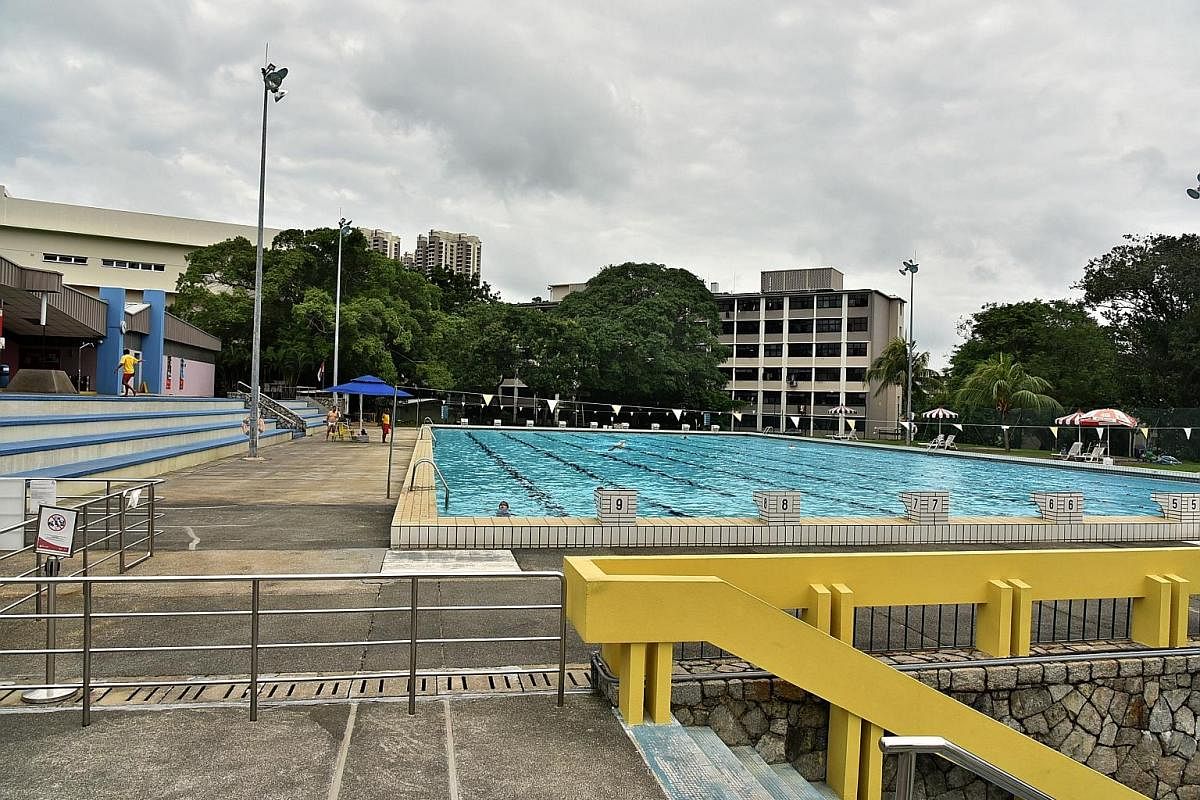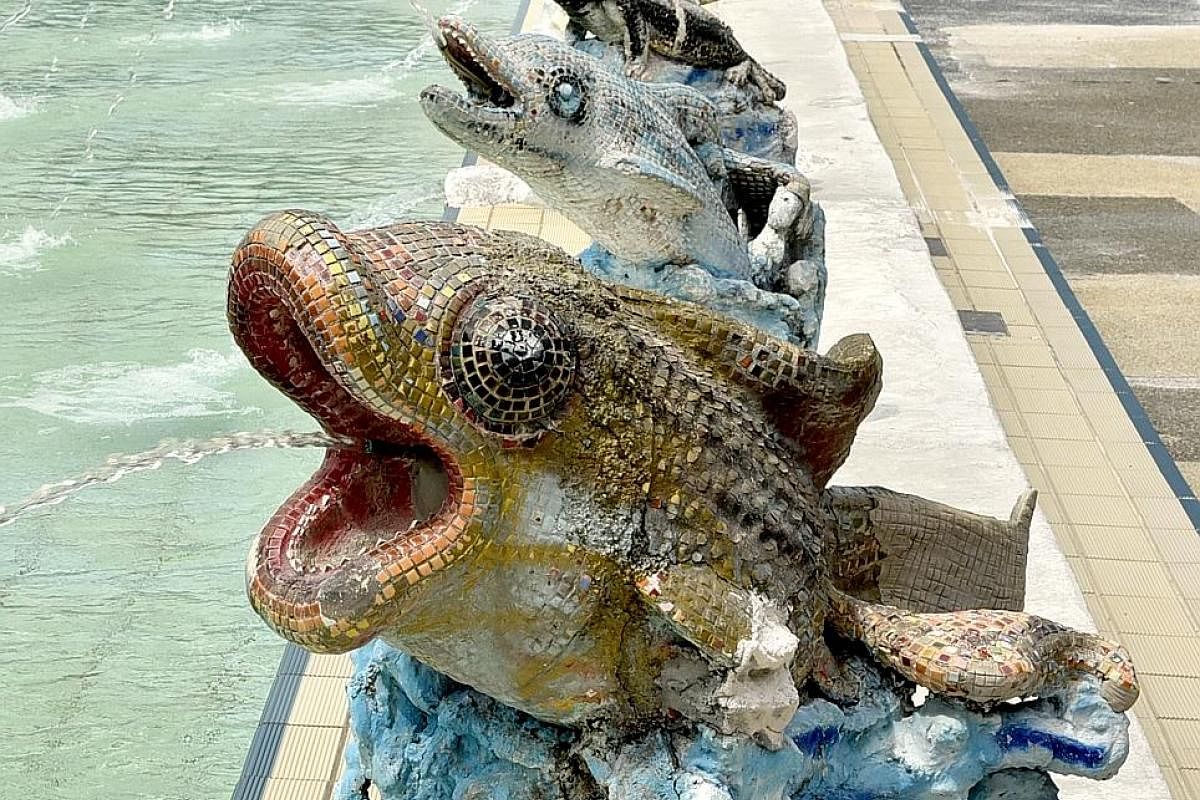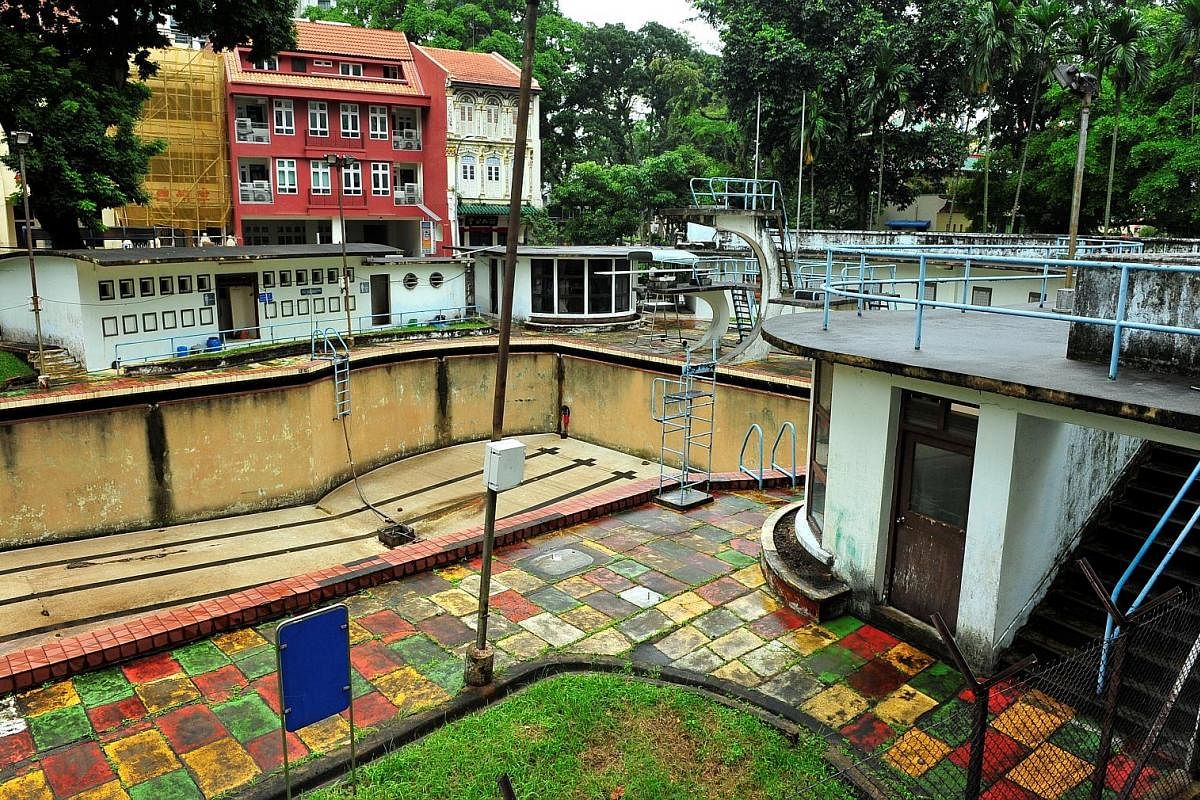My Turf
Yan Kit Swimming Complex: Staying afloat
MyTurf is a new fortnightly series that aims to tell the untold stories of our neighbourhoods. In this second instalment, we take a look at the last of the old-generation swimming pools.



Where there was blue, now there is green.
Five years ago, Yan Kit Swimming Complex was demolished.
Like a disused grave, the rectangular pool was filled with soil and covered up. Today, a carpet of grass rests lightly on it.
Singaporeans mourned the demise of the country's second-oldest public swimming pool.
Tanjong Pagar residents mounted many campaigns to resurrect it. The MP for the area, Ms Indranee Rajah, appealed to Sports Singapore on behalf of residents for a new pool to be built there.
But plans unveiled last month for the site - to be redeveloped into a new sports facility - did not include a pool, as the place is earmarked for sports and recreational use only until 2030. A pool would have been too expensive, said Ms Indranee, explaining the authorities' decision.
The only memorial to Yan Kit Swimming Complex now is a small semi-circular building where people used to wait to enter.
In its heyday, the pool, built in 1952, was so popular that a time limit of two hours was imposed on swimmers.
"People queued outside for hours to get in," said retired lifeguard Ong Poh Soon, 72, adding that staff had to ensure that the crowds did not turn rowdy.
They included gangsters, whose notoriety in the Yan Kit area was well known in the 1950s, he said.
Lifeguards often had to double as bodyguards for young women who found themselves harassed by the gawking hooligans.
While Yan Kit occupied just 0.6ha, its three pools - a 50m swimming pool, a smaller and shallower training pool and a wading pool - were a first, setting the standard for public pools here. It also had a 6m- high diving board, a rarity then.
But the Yan Kit complex and others of its era later fell out of fashion.
They were overtaken by newer public pools such as the one in Jurong East, which opened to much fanfare in 2000, with water slides and a wave pool resembling those of commercial pools.
Today, the new-generation pools dominate the scene. There are currently 23 public pools operated by Sports Singapore.
The first public pool built in the country was the Mount Emily Swimming Complex in Upper Wilkie Road.
It started as a reservoir in the 1880s before opening to the public as a pool in 1939. It closed in 1981.
Another, the River Valley Swimming Complex, which opened in 1959, closed in 2001.
While humble, these pools had their fans. Heritage blogger Jerome Lim had his physical education (PE) lessons at River Valley in the 1970s. He described the walk to River Valley Road from his secondary school in Bras Basah as an "adventure" that took the better part of an hour-long PE lesson.
The quieter corners of the complex were popular among couples taking part in "clandestine acts", recalled the 52-year-old naval architect.
Today, Singapore's oldest surviving public pools date back to the 1970s. They include the Queenstown Swimming Complex. Built in 1970, it is most famous as the training ground for the nation's water polo players, who have won gold in the SEA Games 26 times since 1965.
Sports Singapore said there are no plans to redevelop Queenstown or the Toa Payoh and Katong swimming complexes, built in 1973 and 1975 respectively.
But two others - Bedok and Tampines, built in 1981 and 1989 respectively - will be closed in the near future, to be replaced with pools integrated into new community hubs.
Other old-generation pools have found new leases of life. Though the Farrer Park Swimming Complex, built in 1957, was closed in 2003 - one of six to shut down that year - it later became the home of APS Swim School, started by former national swimmer Ang Peng Siong.
The complex, leased by the authorities to the school, has helped train a new generation of swimmers, who include Paralympians Yip Pin Xiu and Theresa Goh.
The Bukit Merah Swimming Complex - the focus of a five-year dispute between the Housing Board and owners of a 120-year-old Buddhist temple that stood on its site - was also privatised in 2003.
It is now run by a private operator, Sports Lifestyle Initiatives.
Writer Jocelyn Lau, who describes swimming as a "national pastime", documents the evolution in her book 50 Metres: Our Swimming Pools, a second edition of which will be launched next month.
Ms Lau, 42, the owner of publisher Kucinta Books, had started the book as a "small tribute" to her father, who had taken the family to swim at public pools in Toa Payoh and Katong, among others.
While newer pools may have better facilities, calls like the one to restore Yan Kit are part of a desire to preserve memories in the face of rapid development, said Mr Lim.
He added: "It's a part of their childhood and what connects them to Singapore.
"I myself have a longing to go back and visit some of these places but they're no longer there."
Join ST's WhatsApp Channel and get the latest news and must-reads.
A version of this article appeared in the print edition of The Straits Times on February 02, 2017, with the headline Staying afloat. Subscribe

